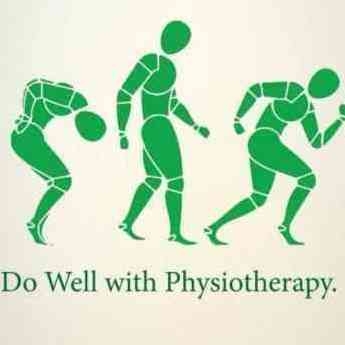+918042754929

This is your website preview.
Currently it only shows your basic business info. Start adding relevant business details such as description, images and products or services to gain your customers attention by using Boost 360 android app / iOS App / web portal.
Lumbar Disc Prolapse / Disc Herniation A commo...
Lumbar Disc Prolapse / Disc Herniation A common cause of lower back and leg pain is a lumbar ruptured disc or prolapsed or herniated disc. Disc herniation occurs when the annulus fibrous breaks open or cracks, allowing the nucleus pulposus to escape. This is called a herniated nucleus pulposus or herniated disc, although you may have also heard it called a ruptured disc or a bulging disc. When a disc herniates, it can press on the spinal cord or spinal nerves. nerves are branching off from the spinal cord and travelling to various parts of your body. The nerves pass through small passageways between the vertebrae and discs, so if a herniated disc presses into that passageway, it can compress (pinch) the nerve. That can lead to the pain associated with herniated discs. Lumbar Herniated Disc Risk Factors Lifestyle choices such as tobacco use, lack of regular exercise, heavy weight lift and inadequate nutrition substantially contribute to poor disc health. As the body ages, natural biochemical changes cause discs to gradually dry out, which can affect disc strength and resiliency. In other words, the aging process can make your intervertebral discs less capable of absorbing the shock from your movements, which is one of their main jobs. Poor posture combined with the habitual use of incorrect body mechanics stresses the lumbar spine and affects its normal ability to carry the bulk of the body's weight. Combine these factors with the affects from daily wear and tear, injury, incorrect lifting, or twisting and it is easy to understand why a disc may herniate. For example, lifting something incorrectly can cause disc pressure to rise to several hundred pounds per square inch! How a Disc Herniates A herniation may develop suddenly or gradually over weeks or months. The 4 stages to a herniated disc are: 1) Disc Degeneration: Chemical changes associated with aging causes discs to weaken, but without a herniation. 2) Prolapse: The form or position of the disc changes with some slight impingement into the spinal canal and/or spinal nerves. This stage is also called a bulging disc or a protruding disc. 3) Extrusion: The gel-like nucleus pulposus breaks through the tire-like wall (annulus fibrosus) but remains within the disc. 4) Sequestration or Sequestered Disc: The nucleus pulposus breaks through the annulus fibrosus and can then go outside the intervertebral disc. Symptoms dull or sharp pain, muscle spasm or cramping, sciatica, and leg weakness or loss of leg function. Sneezing, coughing, or bending usually intensify the pain. Rarely bowel or bladder control is lost, and if this occurs, seek medical attention at once. Sciatica is a symptom frequently associated with a lumbar herniated disc. Pressure on one or several nerves that contribute to the sciatic nerve can cause pain, burning, tingling, and numbness that extends from the buttock into the leg and sometimes into the foot. Usually one side (left or right) is affected. Nonsurgical Treatment of Lumbar Disc Herniation During the first 24 to 48 hours, cold therapy helps to reduce swelling, muscle spasm, and pain by reducing blood flow. apply for no longer than 15 minutes. Medications may include an anti-inflammatory to reduce swelling, a muscle relaxant to calm spasm, and a pain-killer to alleviate intense but short-lived pain (acute pain). Mild to moderate pain may be treated with non-steroidal anti-inflammatory drugs (NSAIDs). These work by relieving both swelling and pain. Usually, after the first 48 hours, heat therapy can be applied. Heat increases blood flow to warm and relax soft tissues. Increased blood flow helps to flush away irritating toxins that may accumulate in tissues as a result of muscle spasm and intervertebral disc injury. Wrap the heat source in a thick towel for no longer than 20 minutes. Spinal Injection If leg pain is severe, or leg weakness is developing, the doctor may prescribe an epidural steroid injection. An epidural steroid injection puts anti-inflammatory medication into the space near the affected nerves in your lumbar spine. Physiotherapy management It includes a combination of treatments to decrease pain and increase flexibility. Ice and heat therapy, gentle massage, stretching, and pelvic traction are some examples, but your physical therapist will work with you to develop the best treatment plan for your pain and other symptoms. Surgical Treatment of a Lumbar Herniated Disc Spine surgery is considered if non-surgical treatment does not relieve symptoms. Constant pain, leg weakness, or loss of function requires further evaluation. Rarely, does a lumbar herniated disc cause bowel/bladder incontinence or groin/genital numbness, which requires immediate medical attention. To relieve nerve pressure and leg pain, surgery usually involves a discectomy (removal of all or part of the intervertebral disc). In addition, the surgeon may need to access the herniated disc by removing a portion of the bone covering the nerve. This procedure is called a laminotomy. #LumbarDiscProlapse #DiscHerniation #Sciatica #PhysioAnimation #PhysioFeed #Physiotherapy #PhysicalTherapy #PhysioLearning

